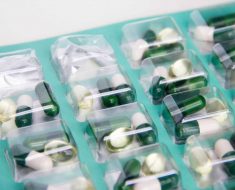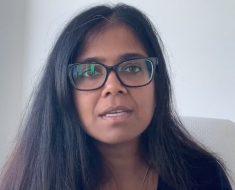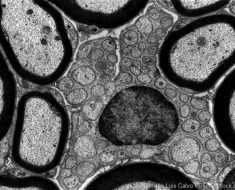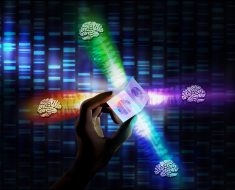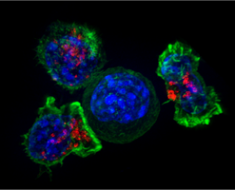Sometimes in research, a smaller finding can open the door to big possibilities.
Neuroscientists at the University of South Carolina (USC) and the Medical University of South Carolina (MUSC) have collaborated on a study in the field of aphasia that has successfully paved the way for a large clinical trial. Their work, published online first on August 20th, 2018 by the Journal of the American Medical Association Neurology, tests whether transcranial direct current stimulation (tDCS) can help patients with stroke-related aphasia recover their use of language.
The clinical trial was led by USC researchers Julius Fridriksson, Ph.D., director of the Center for the Study of Aphasia Recovery, and Chris Rorden, Ph.D. and MUSC researchers Mark S. George, M.D., director of the MUSC Magnetic Brain Stimulation Laboratory, and Leonardo Bonilha, M.D., Ph.D., an associate professor in the MUSC Department of Neurology and director of MUSC’s aphasia clinic. George and Bonilha perform research to understand and treat neurological disorders such as aphasia. Together, the researchers at MUSC and USC formed a team to investigate whether tDCS could help stroke patients suffering from aphasia. The work was supported by the National Institute on Deafness and Other Communication Disorders.
“At 6 months following treatment completion, the response to the aphasia treatment was more than doubled for the patients who received electrical stimulation compared to those who received the placebo stimulation,” said Fridriksson. “If this effect is supported by future research, it could mean a major change in how rehabilitation of stroke is administered.”
About a third of stroke patients lose some of their ability to use language to communicate. This happens when stroke affects networks in the brain that allow us to assign words to thoughts and images or that direct the muscles needed to speak. Aphasia is typically treated with speech therapy that is designed to salvage parts of those networks that remain intact. In speech therapy, a patient is shown pictures of common objects and asked to speak the words that describe them. These naming exercises are used to strengthen a stroke patient’s ability to recall and form words. Although such exercises are proven to help some patients recover some ability to use language, the treatment is not successful in all patients. Recovery can be especially difficult in patients with long-term aphasia lasting 6 months or longer after stroke.
tDCS is a form of brain stimulation that is thought to guide electrical activity in parts of the brain. It is not clear exactly how it works, but researchers think it helps improve brain activity in language networks in the brain cortex. tDCS is non-invasive and is applied through electrodes attached to the scalp. Participants usually feel a brief itchy or tingly sensation but do not report any negative symptoms. The treatment is being tested in a number of different conditions that affect the brain, including depression and Alzheimer’s disease.
The researchers at USC and MUSC questioned whether tDCS could boost scores on naming exercises in stroke patients with long-term aphasia. They used a unique method to test their idea. Instead of looking for proof that the new treatment was effective, they looked for any evidence that it was not effective. This method is thought to be scientifically stronger, because it prevents researchers from ignoring any evidence that a new treatment might work.
In the phase 2 trial, 74 stroke patients with aphasia lasting at least six months were given functional magnetic resonance imaging (fMRI) scans of their brains during naming tests. The fMRI images showed which areas of the brain were activated when a patient was asked to name familiar objects. Then the tDCS electrodes were positioned over those activated areas of the brain. The researchers suspected that stimulating such areas of the brain with tDCS could further strengthen activity in those areas. This kind of enhanced activity might help patients correctly name objects during the speech therapy. Some patients were given 20-minute sessions of tDCS, while others were given sham tDCS, in which electrical current was applied for only 30 seconds to induce the familiar tingling sensation on the scalp. Patients in both groups received three weeks of standard speech therapy, during which their scores on naming tests were recorded.
The scientists were pleasantly surprised to find that patients treated with tDCS were able to name nearly 14 objects, while those in the sham group could name only 8, on average. The door had been opened to try the new treatment in a larger number of patients. Bonilha explained why it was important to look for any evidence that the treatment did not work.
“For this to be used in a routine clinical setting, there needs to be a definitive trial in the future,” said Bonilha. “This study showed that doing a larger trial wouldn’t be a waste of time, because there seems to be a pretty good indication that tDCS is promising. We are in the process of planning and designing the next study.”
This study showed that tDCS coupled with speech therapy is a promising new treatment for aphasia patients who have few options. “For many individuals who have long-standing language deficits, just a few more words can have a significant impact,” said Bonilha.
Source: Read Full Article
